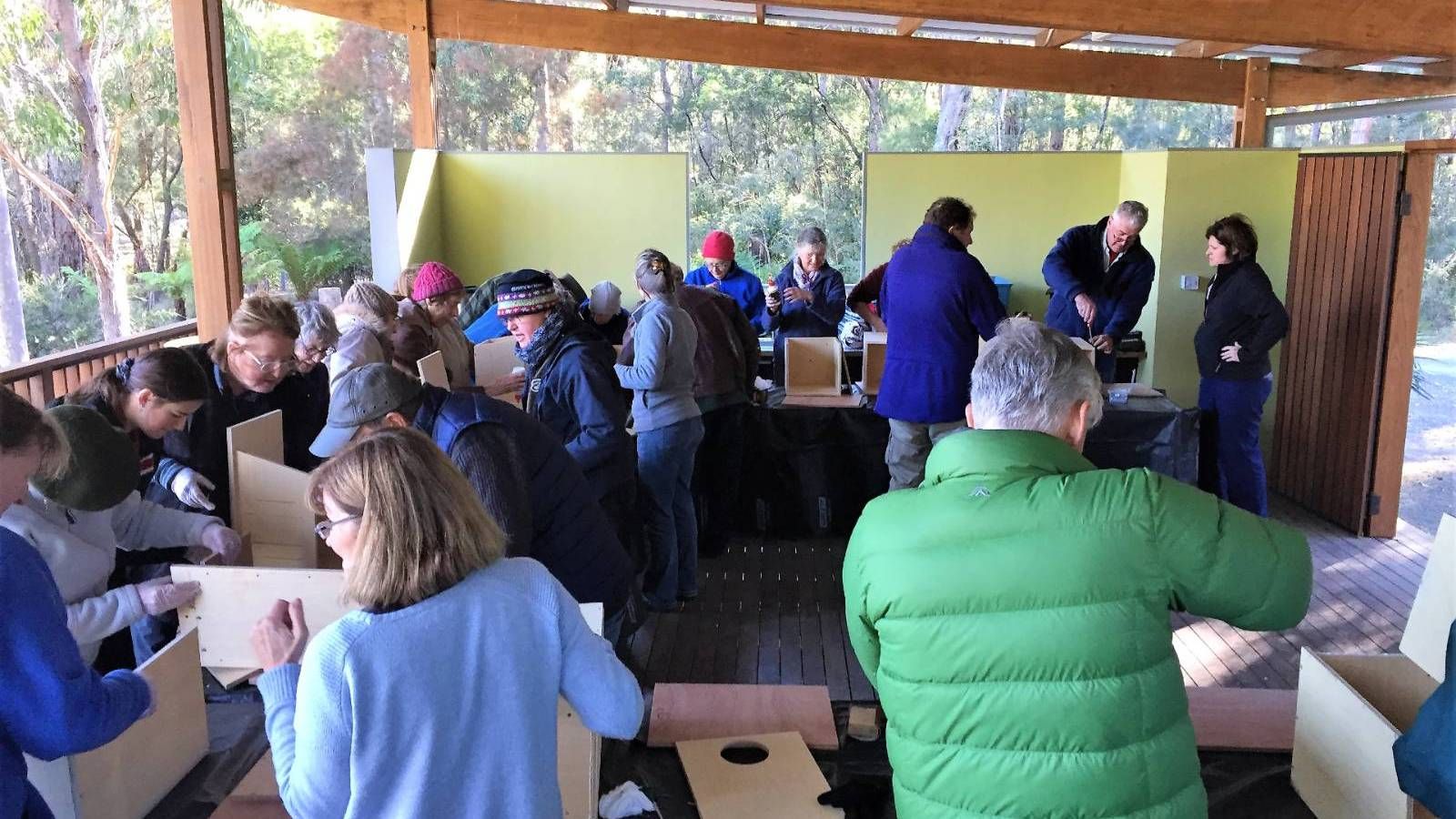Eurobodalla nesting box program
Nesting boxes are artificial hollows that provide habitat to native wildlife. The boxes cannot replace an old tree with diverse hollows, but in areas where these hollows no longer exist, the boxes can benefit some wildlife species.
- Over 300 species of our native animals use tree hollows for nesting, breeding and shelter.
- Hollows provide a safe home away from predators and the weather.
- It can take hundreds of years for a tree to develop hollows - they are crucial for the survival of many native animals.
The impact of the 2019/20 summer bushfires was severe, resulting in a significant reduction of hollows in the Eurobodalla. After the bushfires, Council installed hundreds of nesting boxes for local wildlife across the region. We were able to do this with funding received from WIRES and government grants.
Background
During the first stage of this program, Council worked with community groups across Australia to build 600 nesting boxes. These boxes cater for a diverse range of native wildlife. This includes feather-tailed gliders, sugar gliders, parrots and other bird species.
We worked with landholders and Landcare groups to install the nesting boxes across Eurobodalla. We installed them in both burnt and unburnt vegetated areas.
- Important elements of the program's success include the location and orientation of the boxes, and the way we install them.
- We will continue to work with these landholders and Landcare groups. This includes monitoring the boxes to see if the wildlife is using them, and by which species.
- So far, we've seen some wonderful results - wildlife making themselves a new home.
Gang-gang cockatoo pilot program
During the second stage of the nesting box program, we worked with experts to develop and build nesting tubes for Gang-gang cockatoos.
- Over the past 20 years, Gang-gangs have experienced a decline in population by about 70%.
- Gang-gang cockatoos are endangered under the Environment Protection and Biodiversity Conservation Act 1999.
- In 2023 we installed 30 nesting tubes in 10 specific locations as part of a pilot program. We will carry out this monitoring program for three years to find out if Gang-gang cockatoos use the nesting tubes to breed.
- This program acts as a major conservation measure to protect the species from becoming extinct in the future.
More information
For more information about this program, contact Courtney Fink-Downes, Natural Resource Supervisor, on:
- T: 02 4474 7493
- E: Courtney Fink-Downes

